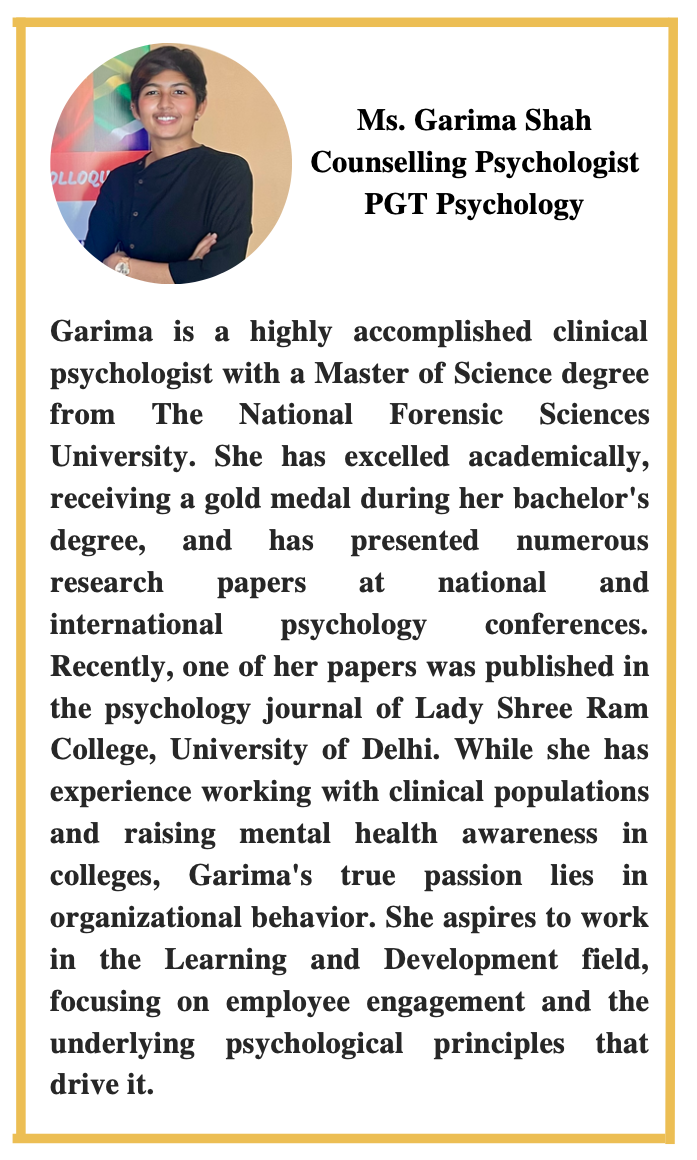An organizational setting is one of the primary locations where individuals from diverse backgrounds come together, uniting their efforts to function as a unit. As people collaborate, effective workplace communication becomes inevitable. However, due to variations in background, culture, education, and other factors, being on the same page while engaging in conversations can be challenging. While communication primarily involves information exchange through words, it encompasses more than mere verbal expression. Various elements, such as tone, intention, and intensity, significantly impact how information is received and acted upon. There is a psychological aspect to it, as words alone do not fully convey meaning; interpretation occurs within the mind.
Similar to how the Gestalt principle suggests that the whole is greater than the sum of its parts, words can result in different interpretations when other elements (as mentioned above) are added to them (Koffka, 1935). Thus, considering communication solely through the lens of words will not always deem fruitful. As correctly said, ‘The most important thing in communication is hearing what isn’t said.”
Communication plays a central role in employee engagement. However, individual differences and organizational hierarchies often act as barriers that can impact the productivity and performance of the employees. Most people perhaps think that they are communicating, but lack of clarity or misunderstanding can prove it futile. In many cases, employees may feel a lack of safe space to openly express their opinions or ideas, leading to interdepartmental friction which results in poor collaboration. This hints towards a mentality where employees perceive events from the lens of “them vs me”.
Such instances are often prevalent in organizational settings that follow a fixed hierarchical structure. In an interaction with a senior HR professional from a Gujarat-based company, instances were shared where employees confided in her. She reckoned how simply listening to them instantly alleviated 50% of their stress and negative emotions. A popular saying, “listening is the highest form of respect you can give.” puts this aptly.
Just as customer needs are protected through attentive listening and problem-solving, employees require the same. A lot of research has focused on the communication styles of leaders and how they can result in positive or negative outcomes. By establishing a foundation of trust, transparency, encouragement, and engaging communication, organizations can create an environment where employees experience job satisfaction, effective conflict resolution, and mutual respect. Once this base level is achieved, employees then have the space to focus on tasks directly relevant to the organization, leading to increased performance and productivity. Another important aspect of any organization is teamwork, which has implications for decision-making and responsibility. Thus, it is imperative that freedom of expression is maintained in such settings. Ultimately, it is the organization itself that bears the outcomes.
Consideration of variations in beliefs, biases, prejudices, and perspectives among the workforce is essential. By acknowledging these differences, one can attempt and learn to communicate taking into account these factors, in order to facilitate discussions and decisions. To achieve this, individuals must also learn to not let their egocentric tendencies overpower. A speaker at a corporate training program I recently participated in emphasized that in most conversations, people are not truly listening; instead, they are waiting for an opportunity to respond back.
Multitasking (evaluating/judging the other person) simultaneously further hampers effective communication. And undeniably, non-verbal communication plays a significant role in how information is interpreted. Hence, the ability to actively listen and observe remains crucial, and most of all, to have the willingness. In a nutshell, individuals listen with their eyes first, then their hearts, and only then, their ears (Bucăţa and Rizescu, 2017).
In the current scenario, where interdisciplinary approaches are encouraged, technology merges with the workforce, and cultural diversity thrives more than ever, it is pivotal to foster effective communication, that acts as a strong foundation that leads to both personal and organizational growth.
References
Koffka, K. (1935). Principles of Gestalt psychology.
Bucăţa, G., & Rizescu, A. M. (2017). The Role of Communication in Enhancing Work
Effectiveness of an Organization. Revista Academiei Forţelor Terestre, 22(1), 49– 57. https://doi.org/10.1515/raft-2017-0008
About the author


